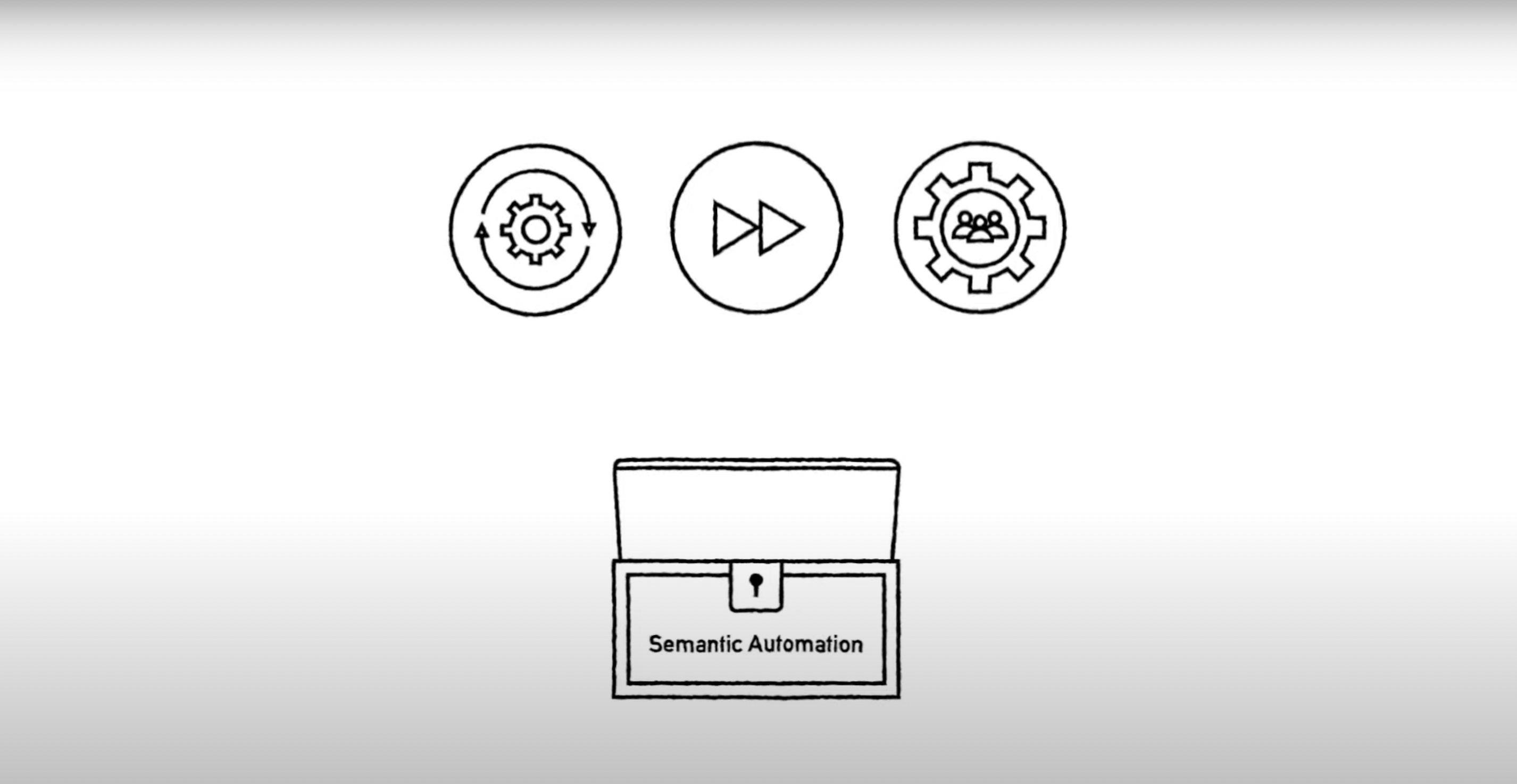Semantic Automation: The Next Frontier in Emulating Human Work

After robotic process automation (RPA) and artificial intelligence (AI), the next technology to significantly advance automation will be semantic automation. It will accelerate and simplify automation development, improve the reliability of automations, and expand automation use cases. In this blog post, I will explore semantic automation in more depth and how it is a critical part of our vision to achieve fully automated enterprises. I will also share how you can start getting involved to be part of this journey.
What is semantic automation?
Software robots have proven their effectiveness at performing many routine tasks. And every day, they continue to advance, becoming even more adept at performing these tasks. However, to truly reach the next level, they'll require a deeper understanding of the world in which they operate. The study of such understanding is called semantics, which dictates what the “world” means to a robot, as well as how this meaning can be.
It can be easier to explain this concept in a human example: when we are taught a new skill, we can look for similarities to the things we already know, and from there make inferences about how to complete our new task. Software robots with semantic capabilities will be able to do that.
This explainer video compares a kitchen intern learning to become a sous chef with a software robot that becomes a more sophisticated and helpful assistant for humans, as a result of semantic automation.

Semantic automation means adding this semantic understanding across our platform such that software robots can deal with interfaces and documents more like a human—with a higher level of understanding.
Rather than just seeing the construct and layout of a document or application screen, software robots understand the business context around everything you're doing. With an understanding like this, software robots equipped with semantic capabilities make developers much more productive by allowing them to focus on the business problem they are trying to solve. Instead of interacting with document constructs or user interface (UI) elements.

What are the business benefits of semantic automation?
Faster development
Manually building relationships between documents, data, applications, and processes can be extremely time-consuming.

Semantic automation can reduce the amount of coding needed for a workflow from many steps to just a few.

UiPath co-CEO Daniel Dines used this medical referral example when speaking to semantic automation during his FORWARD IV keynote session. Read the recap.
Enhanced reliability
Semantic automation can withstand a relatively large degree of changes in the target app, including modifications that would ordinarily break an automation. Robots can adapt to the new state of the app and continue to work.
More power for more users
Business users can use semantic automation to perform tasks faster or build their own automation without the need for detailed knowledge of the underlying technology.
What is UiPath doing from a product perspective?
Semantic automation is not going to happen overnight. But we think semantic automation has the power to revolutionize automation—and so UiPath is continuing to advance our technology and to invest in the next major step in enabling a fully automated enterprise™. UiPath Platform already has several automation capabilities that support semantic automation, and more capabilities are in the works to unlock its full potential.
Find out about updated capabilities available in our biggest release of the year. Join us for UiPath Live: The 2022.4 Release show on May 18.
Save your spot.
Try semantic AI with "Clipboard AI"
When you spend your day repeatedly copying and pasting data, you're missing out on the chance to use your skills for more important or interesting work.
Created for business users, "Clipboard AI" intelligently transfers data between documents, spreadsheets, and apps. It understands the structures of your content and automatically inserts critical data into the right places, taking copy/paste to the next level.
The standalone app we're currently calling "Clipboard AI" is still in development, but we would like to involve our early adopters throughout the next stages so that we can create an app that addresses our users' specific needs. Early adopters’ feedback also helps us continue to improve the user experience. If you are interested in learning more about this app and participating, you can sign up through the UiPath Insider program.
UPDATE: UiPath Clipboard AI™ was named one of TIME's Best Inventions of 2023. Read why TIME recognized Clipboard AI.

Product Marketing Manager, UiPath
Get articles from automation experts in your inbox
SubscribeGet articles from automation experts in your inbox
Sign up today and we'll email you the newest articles every week.
Thank you for subscribing!
Thank you for subscribing! Each week, we'll send the best automation blog posts straight to your inbox.



